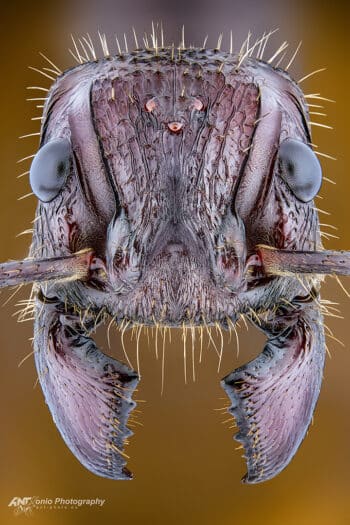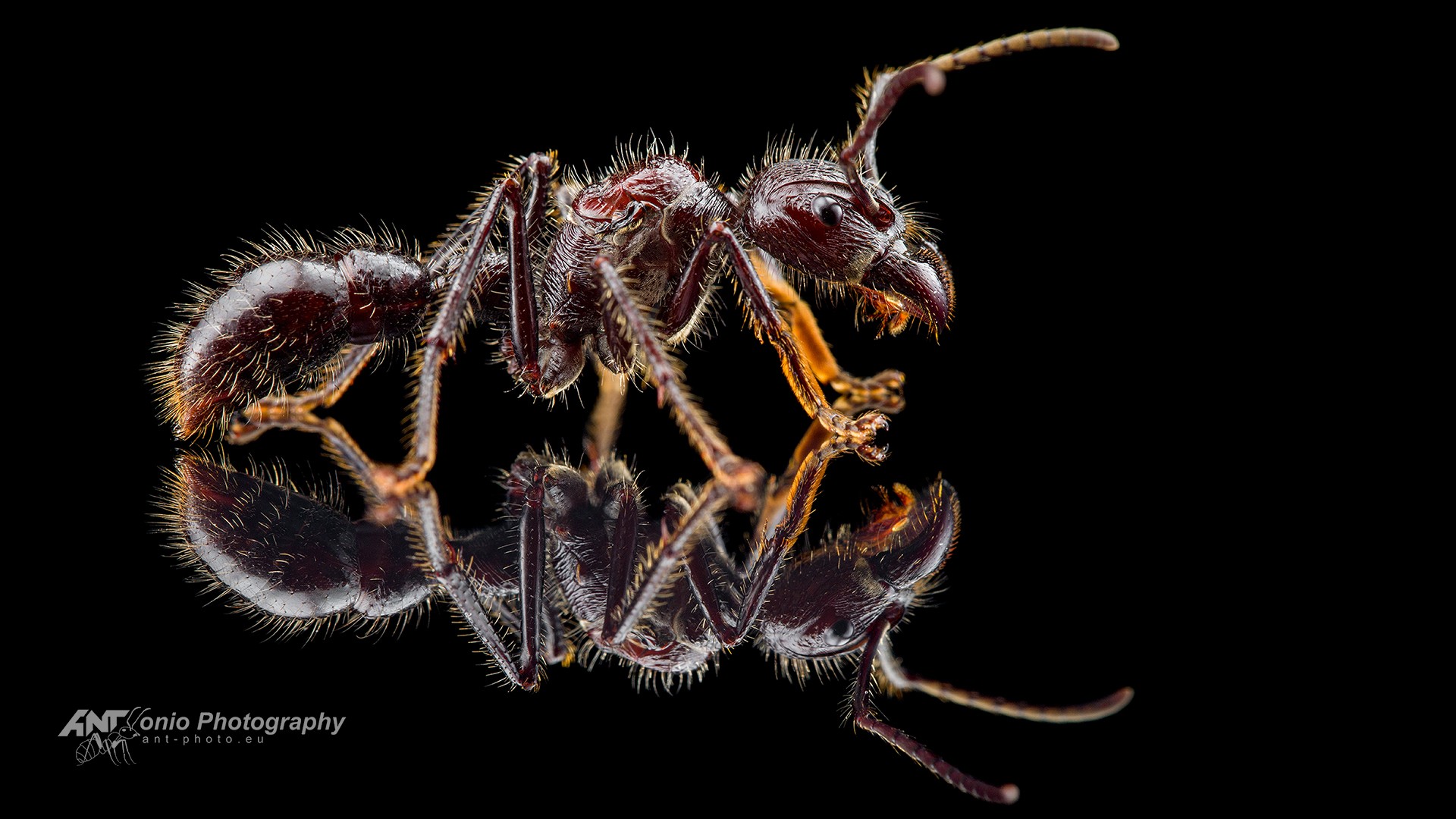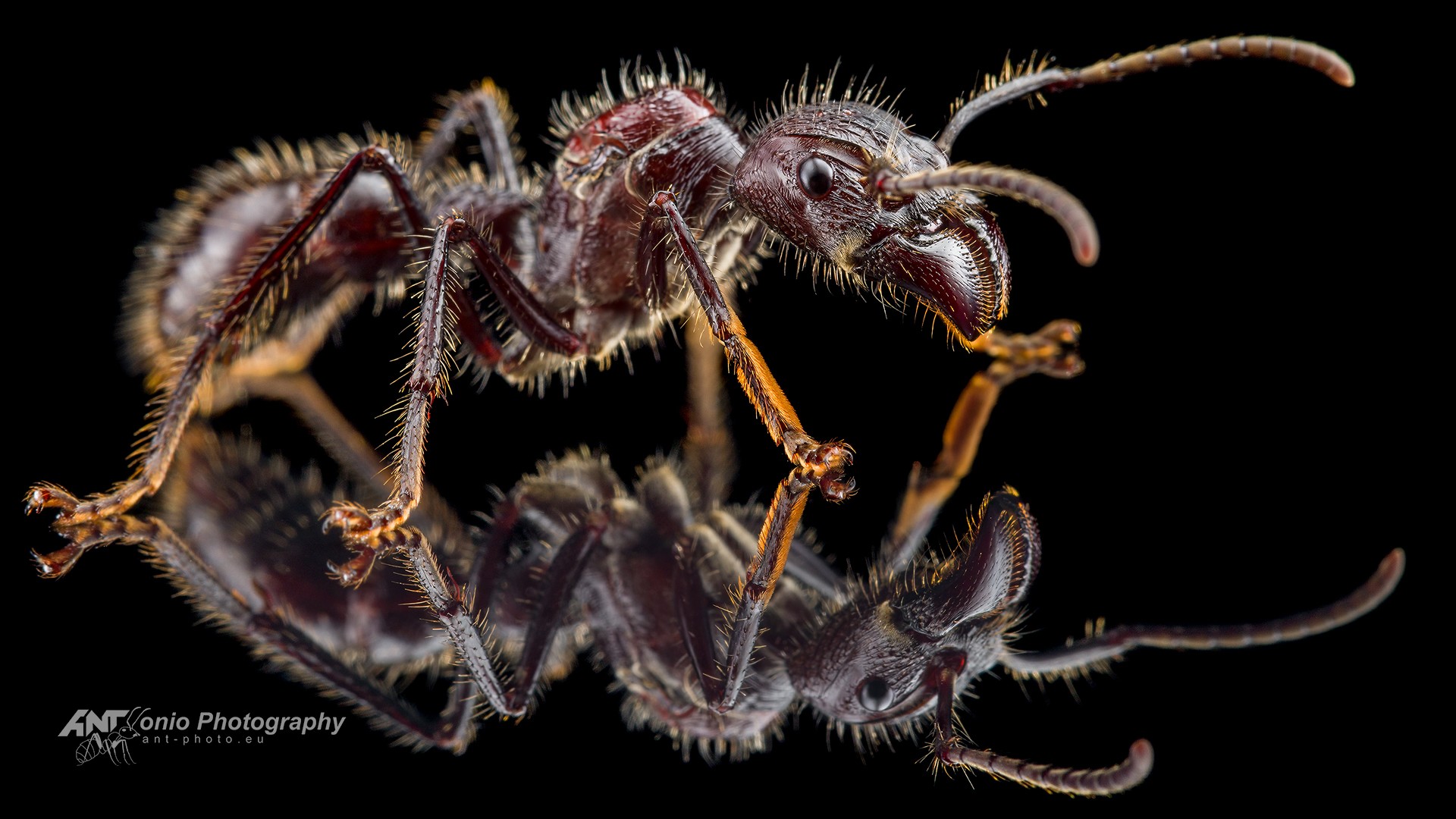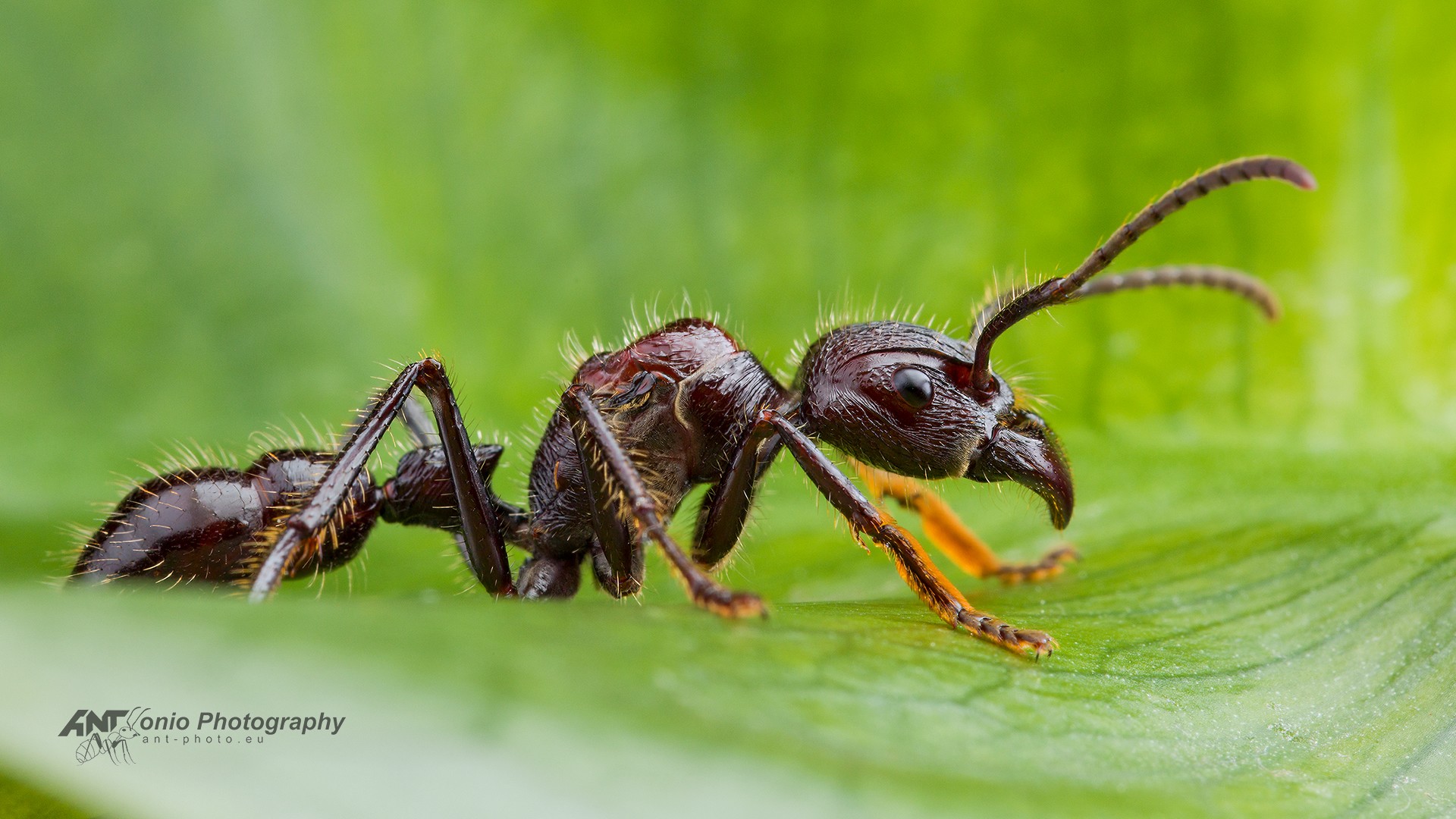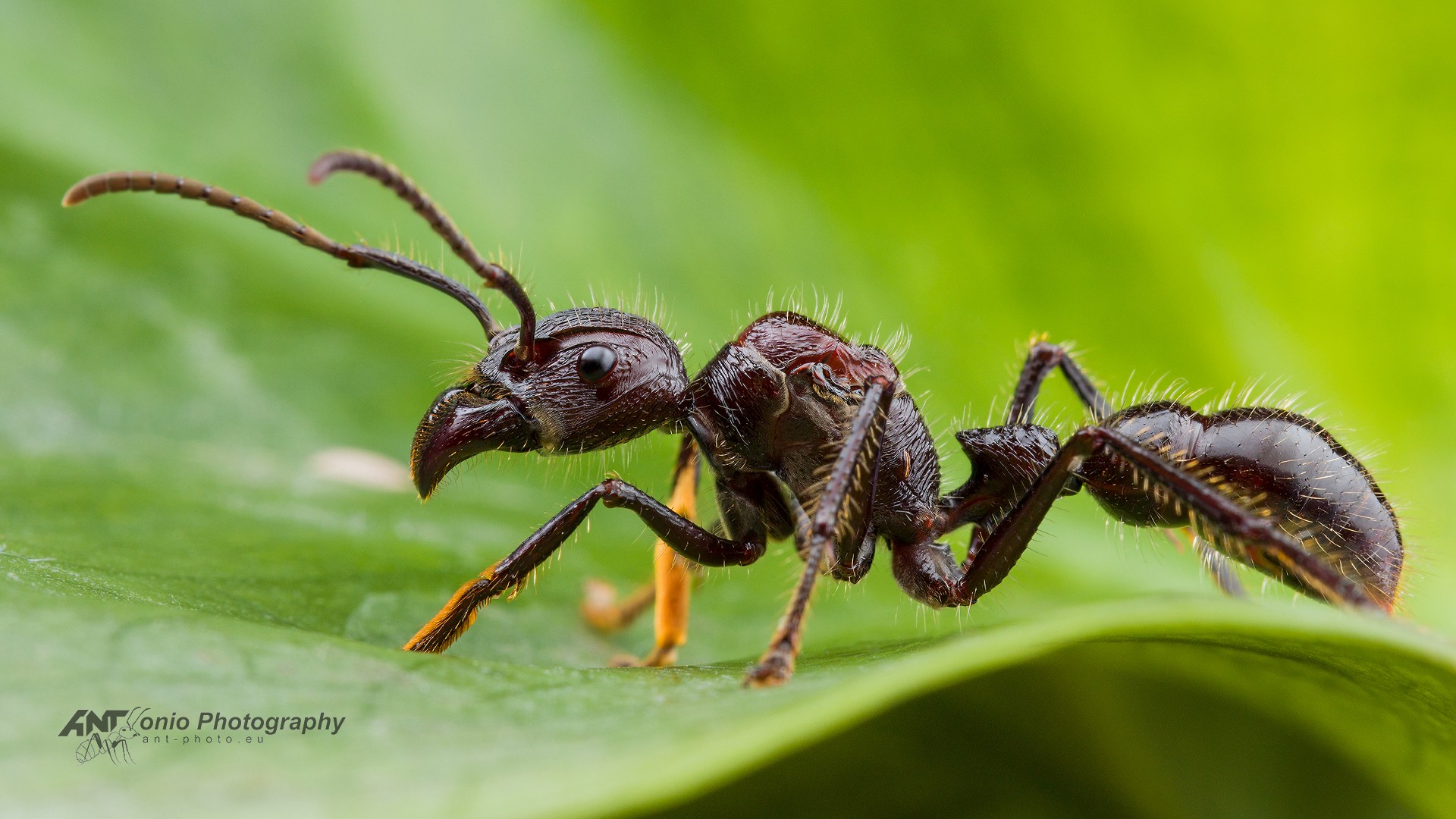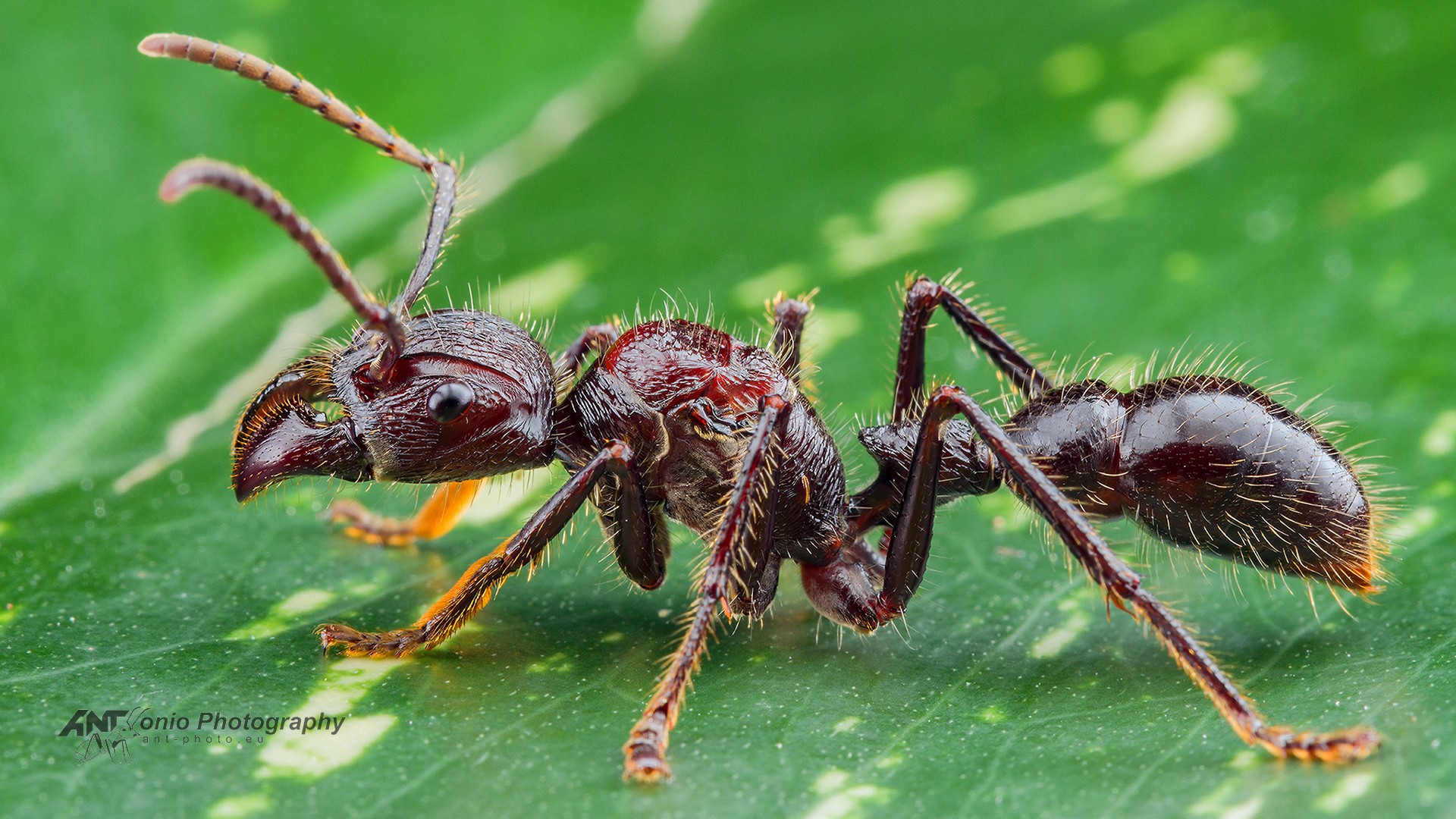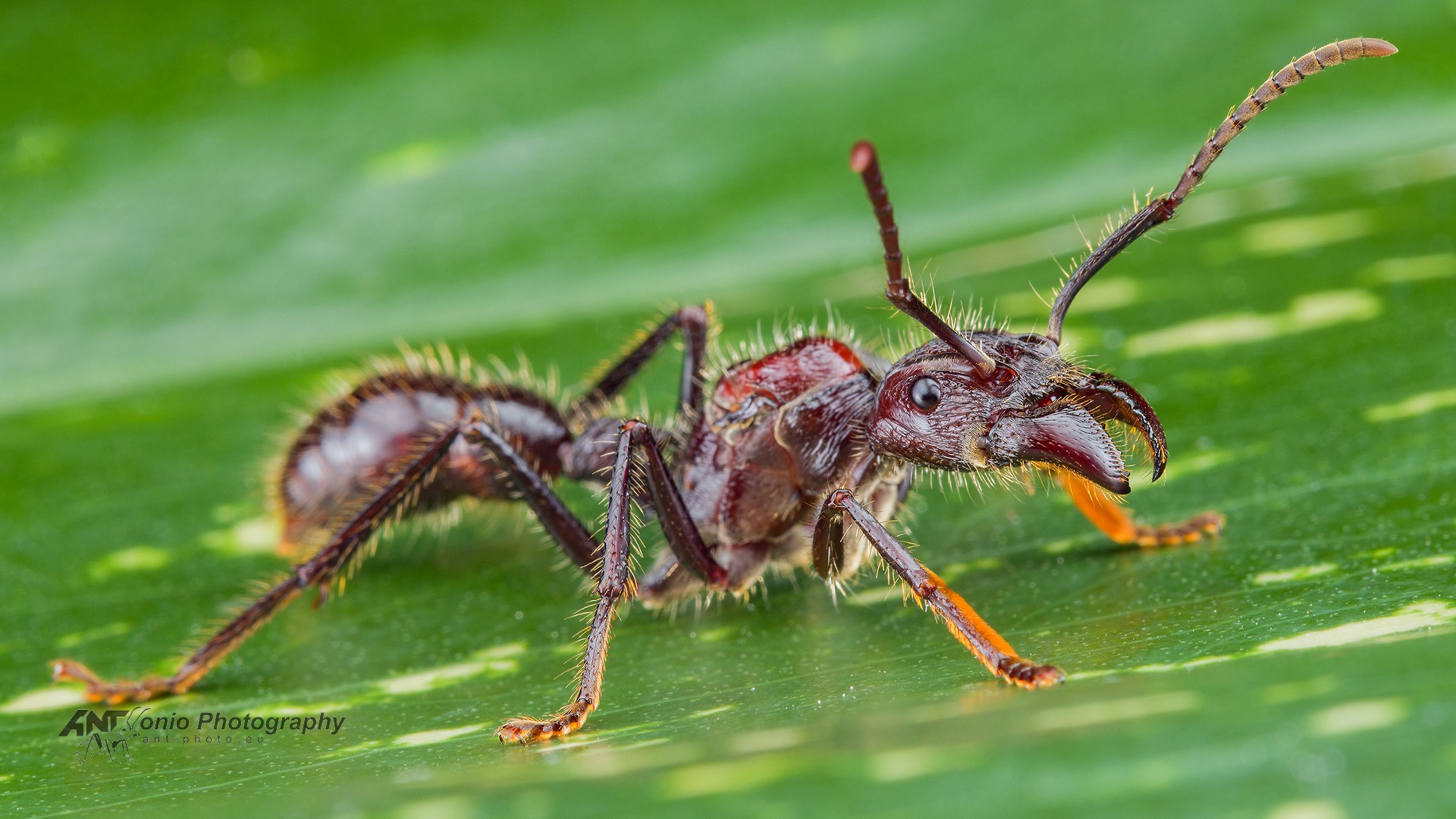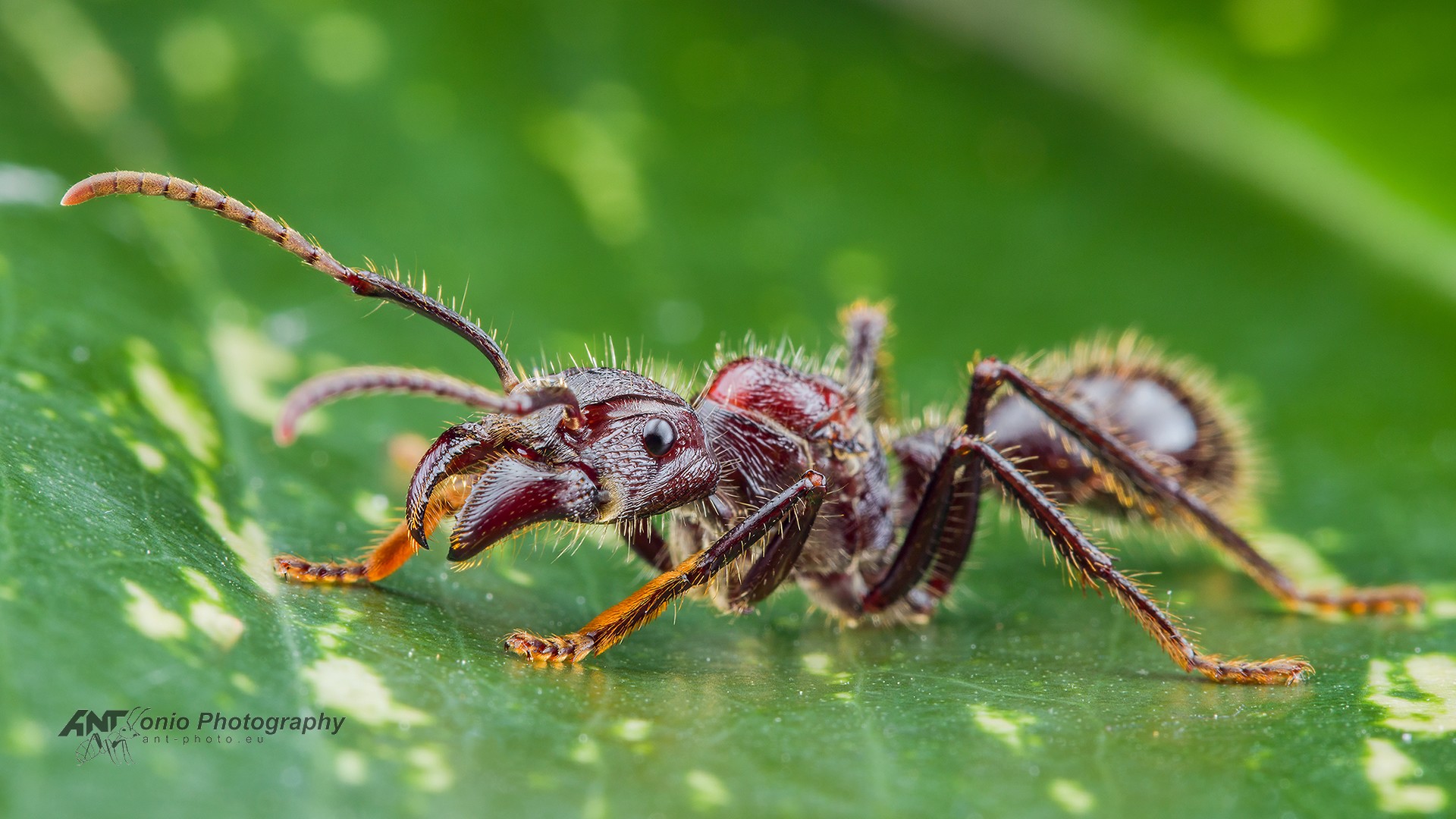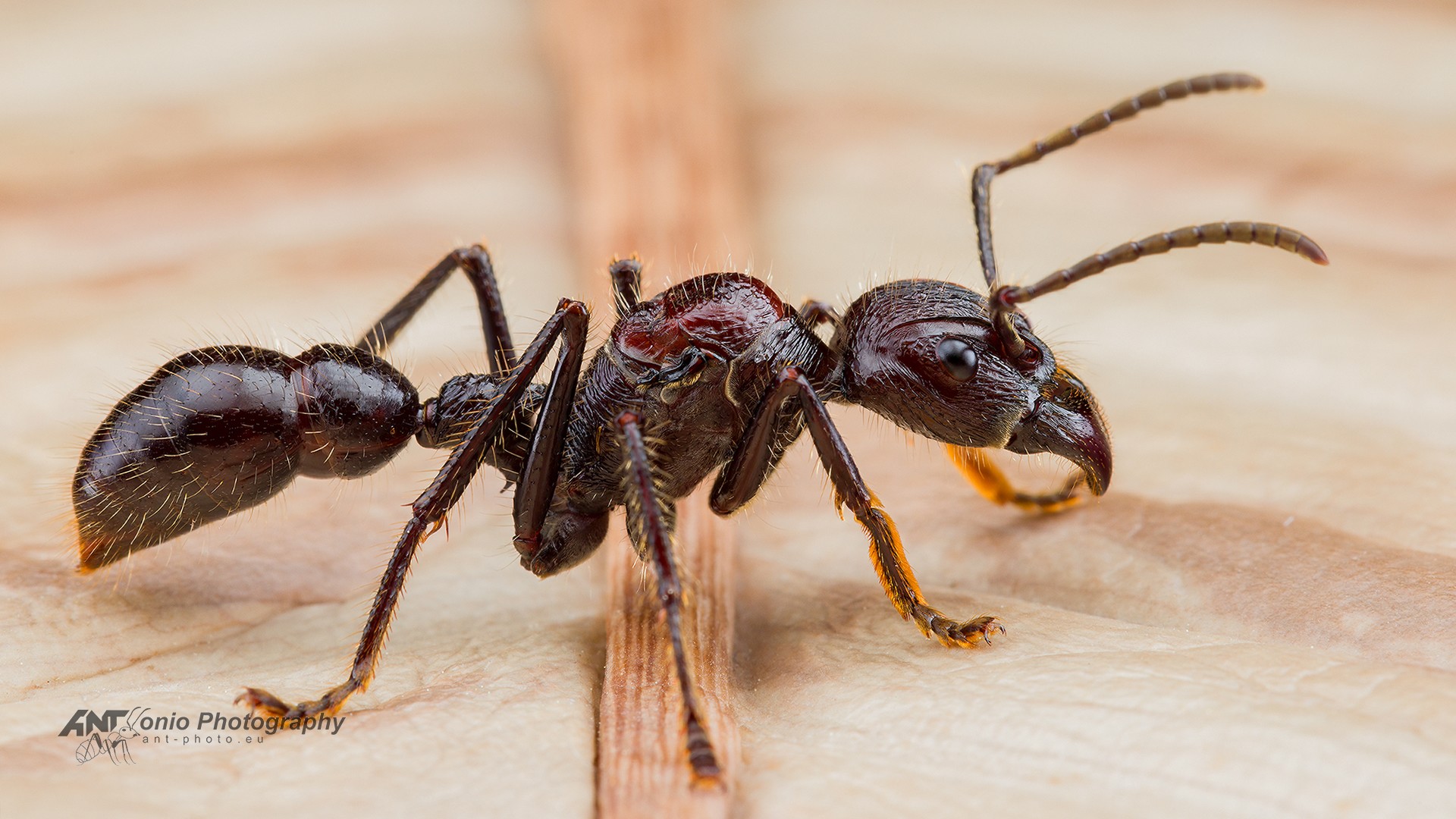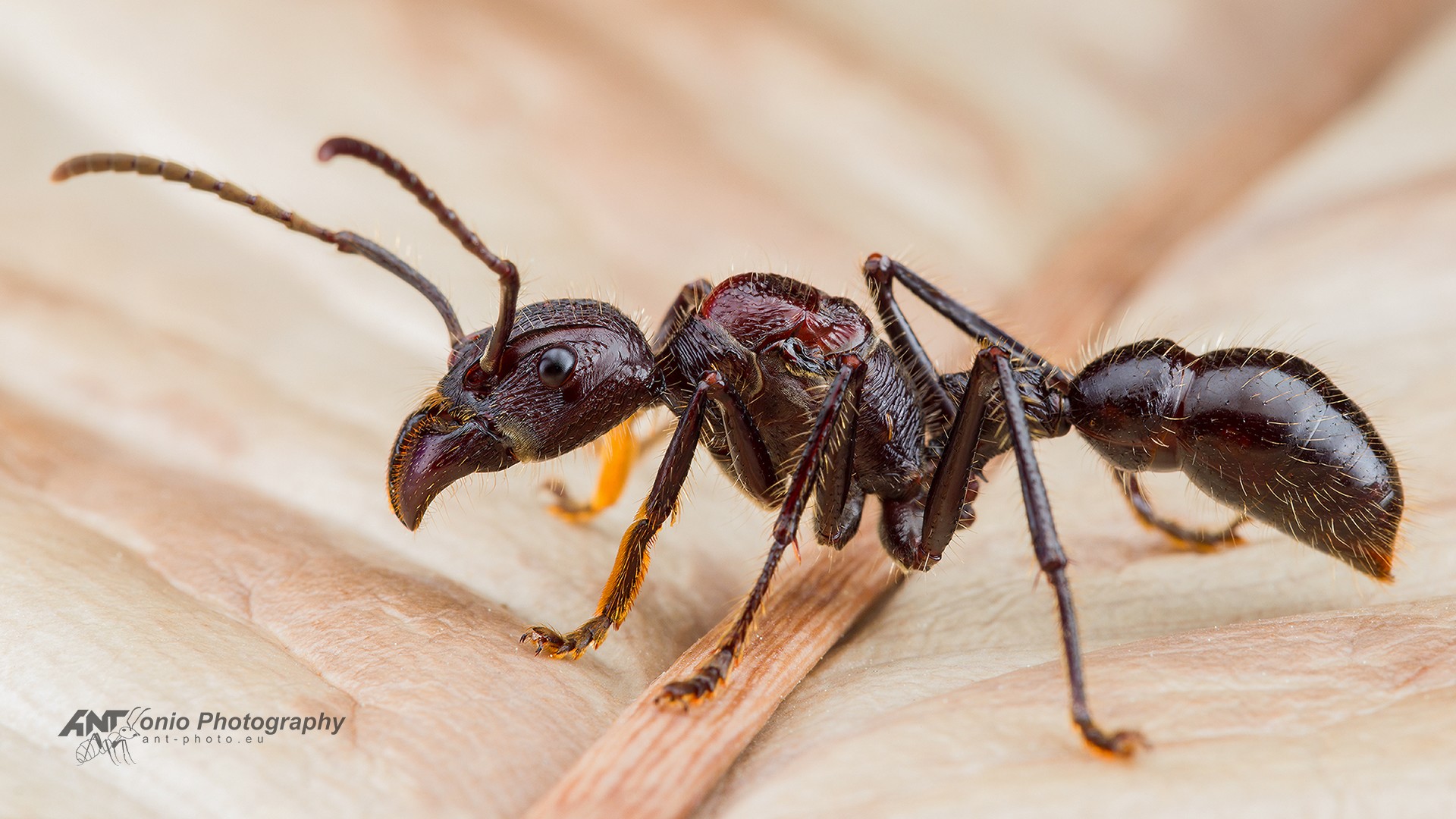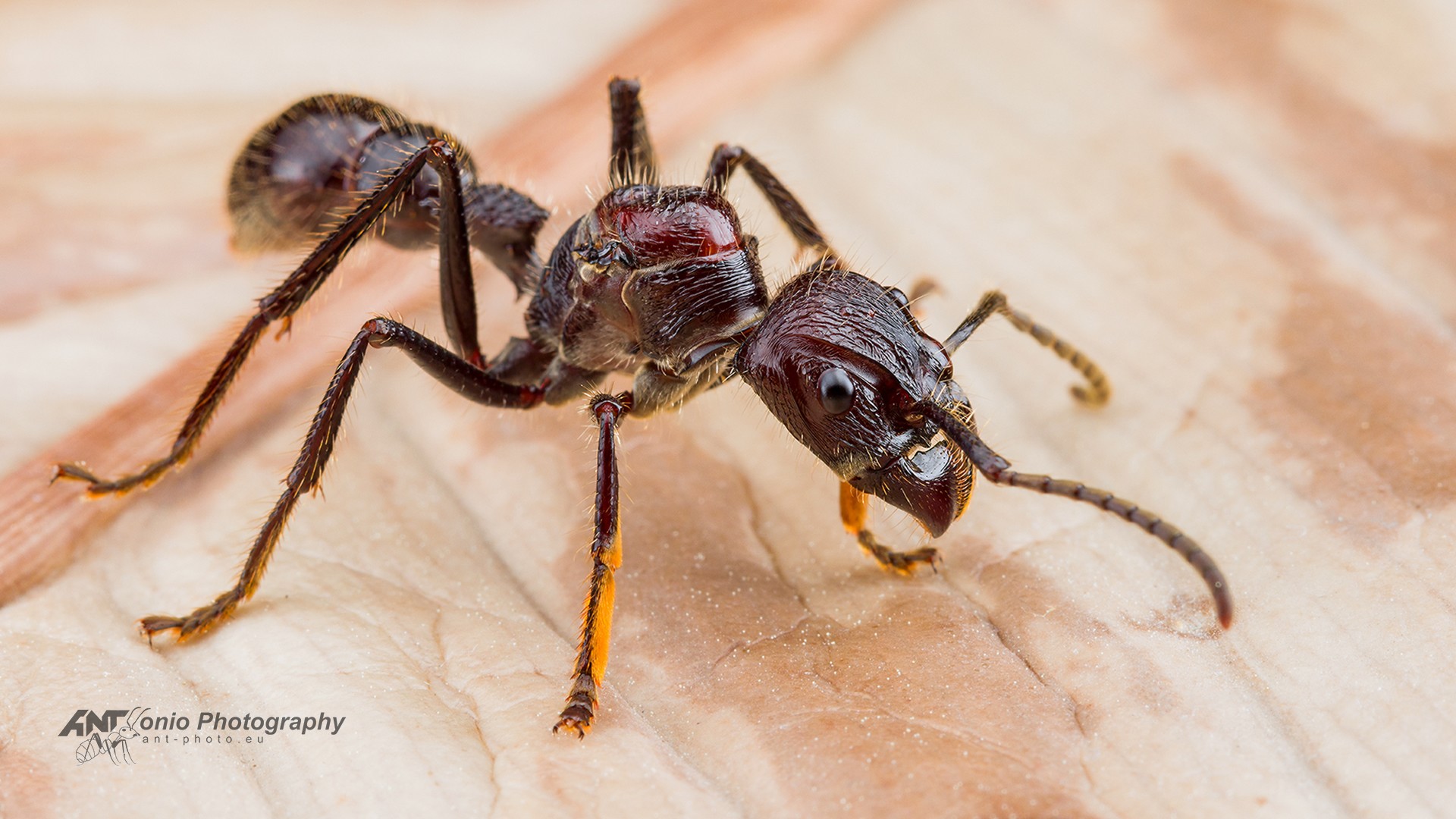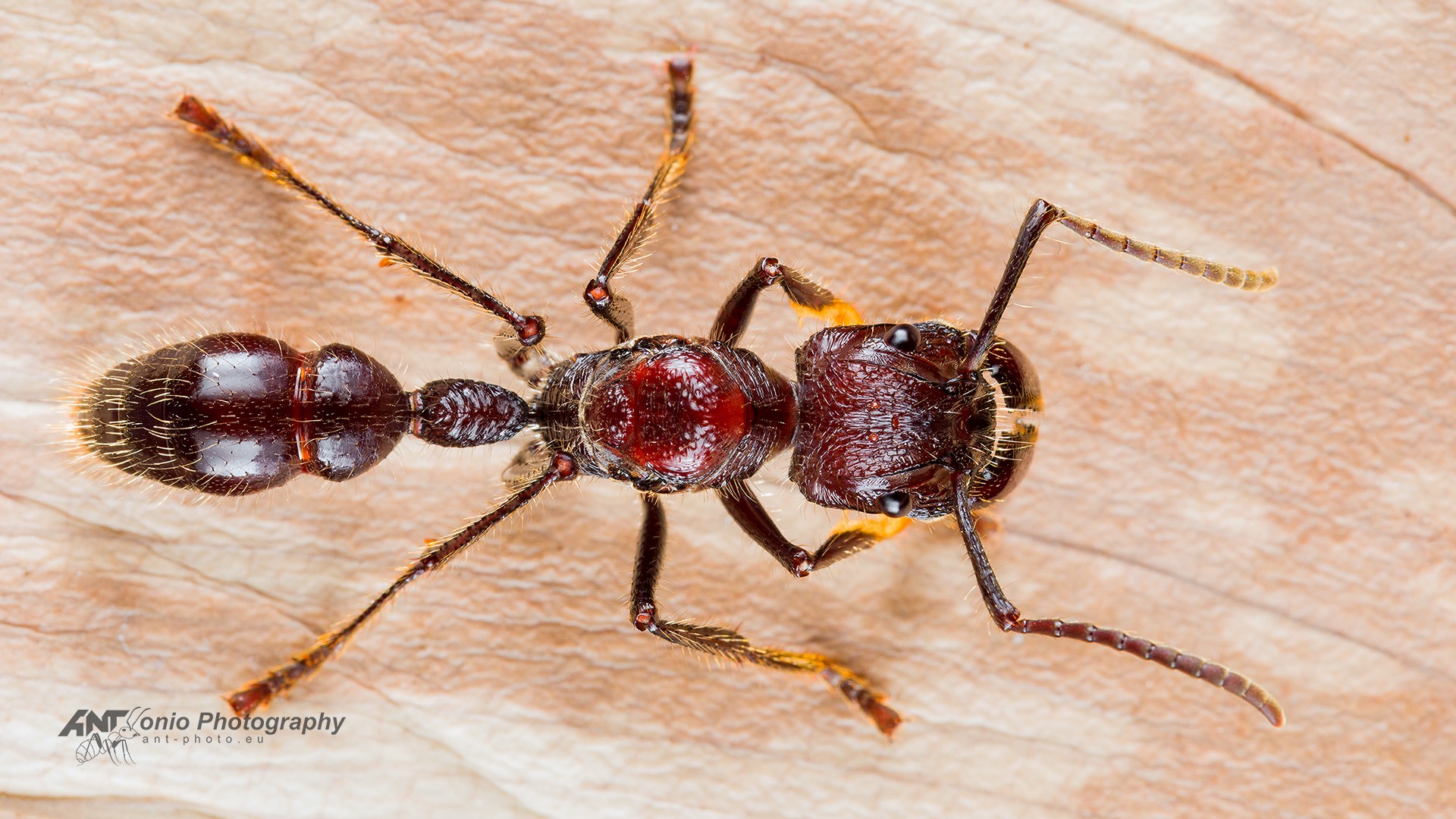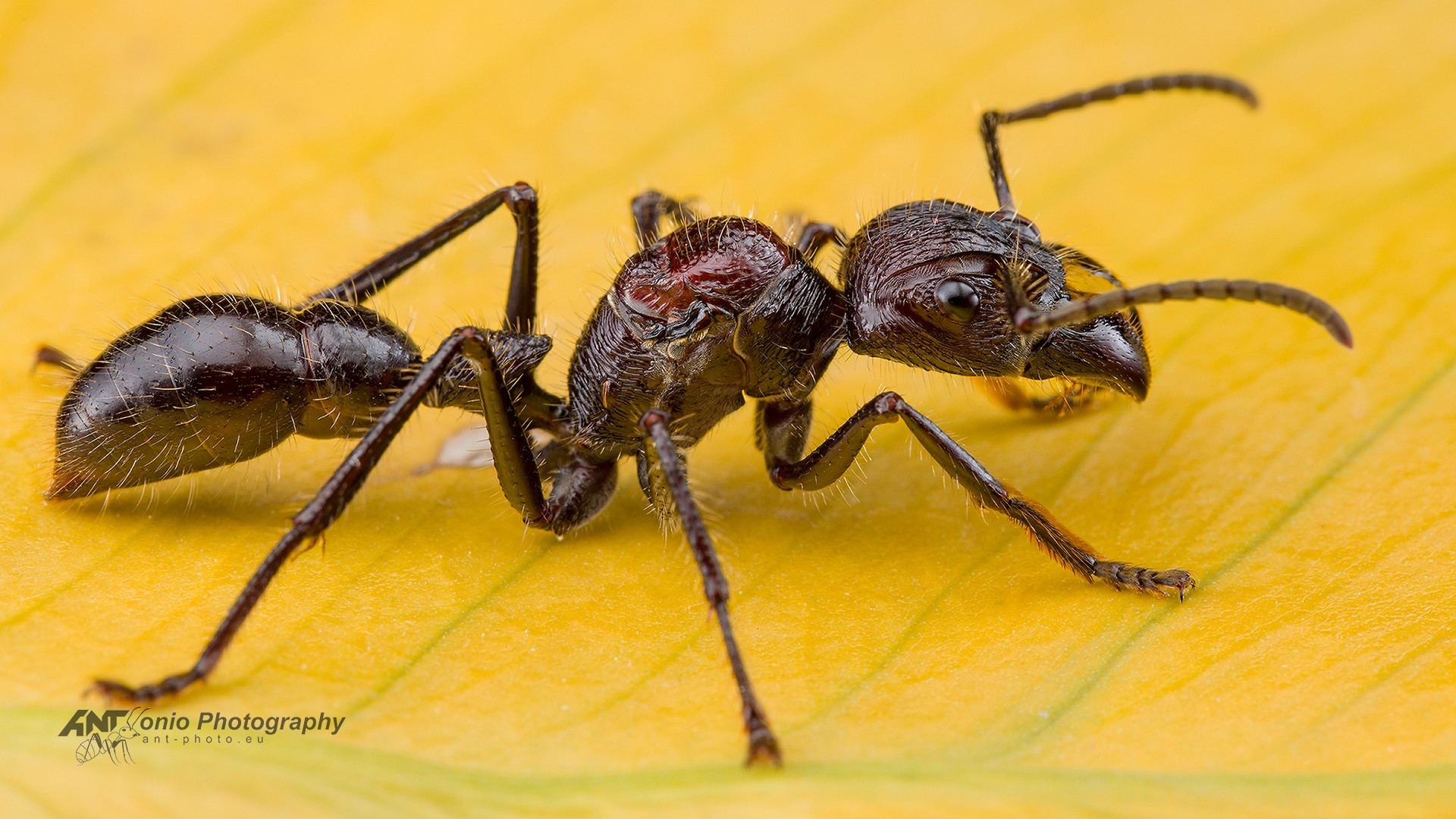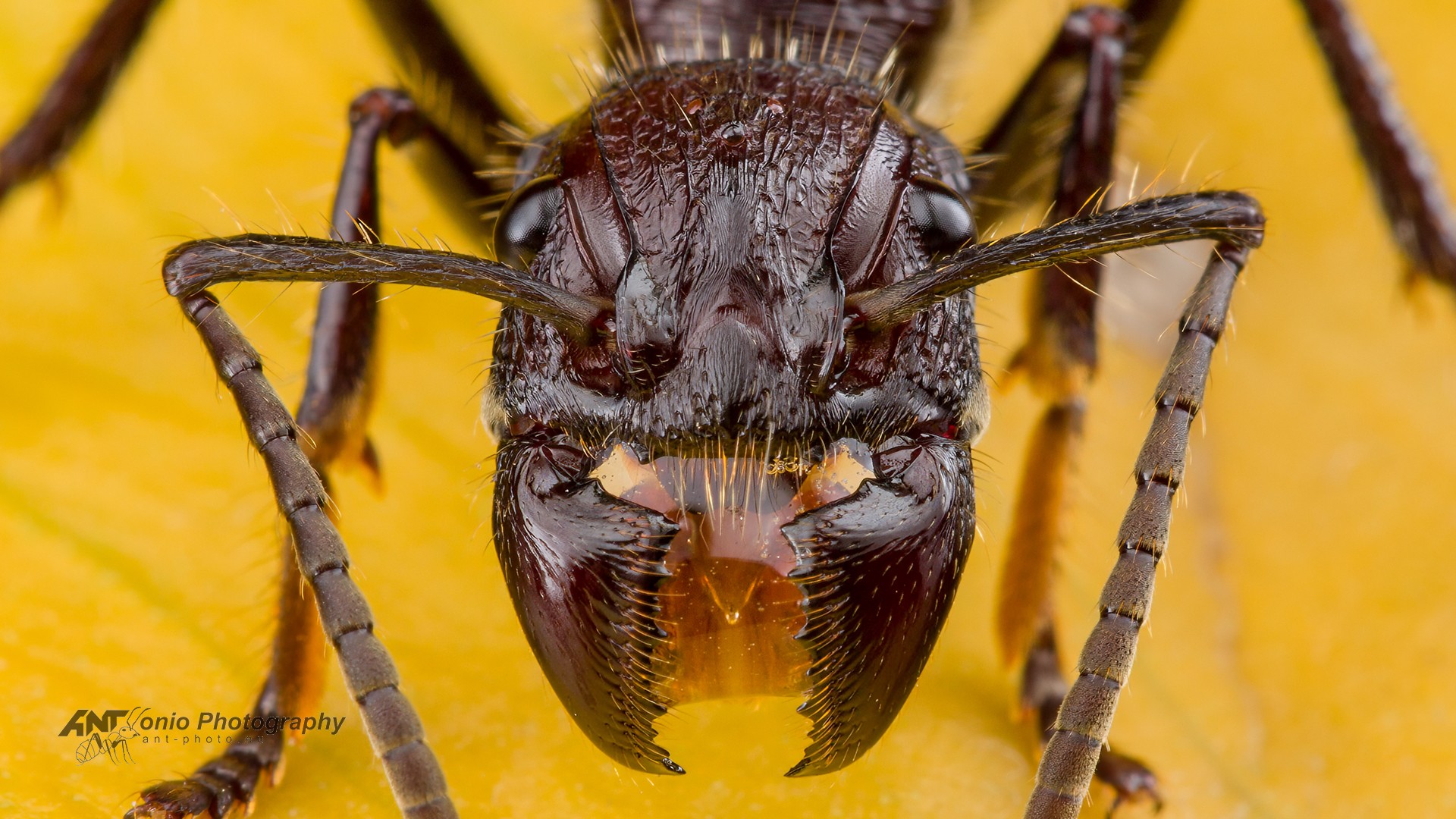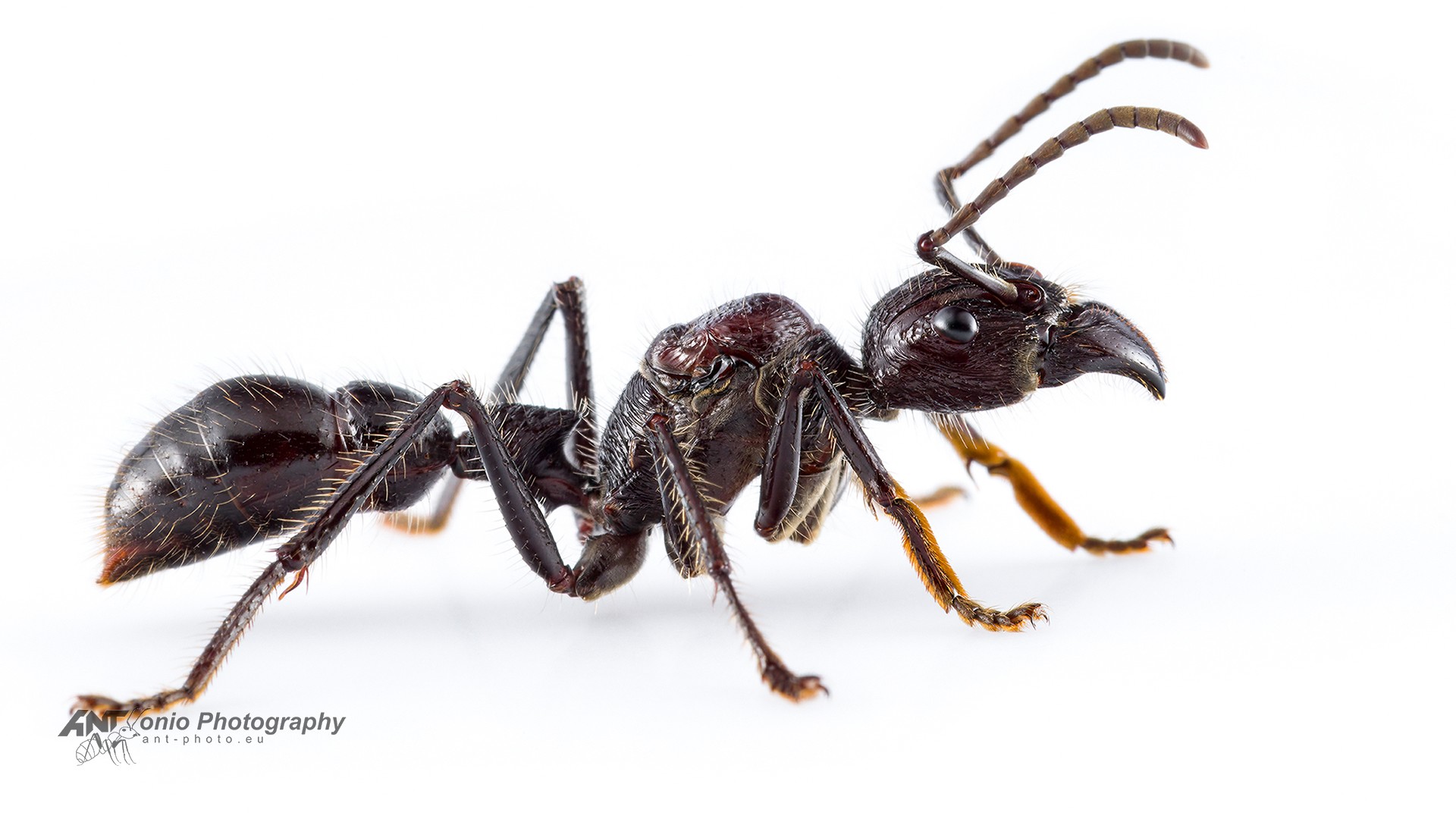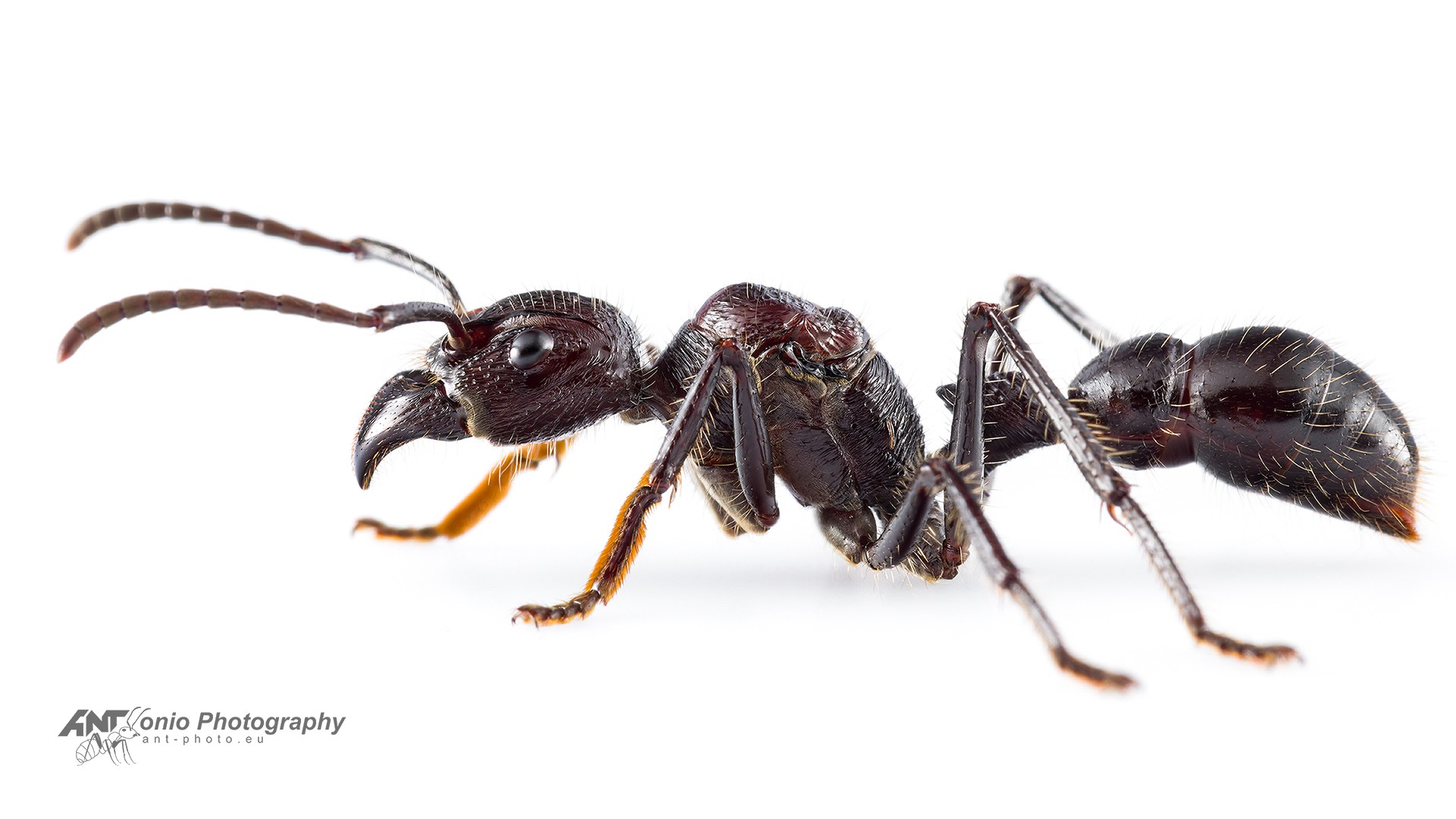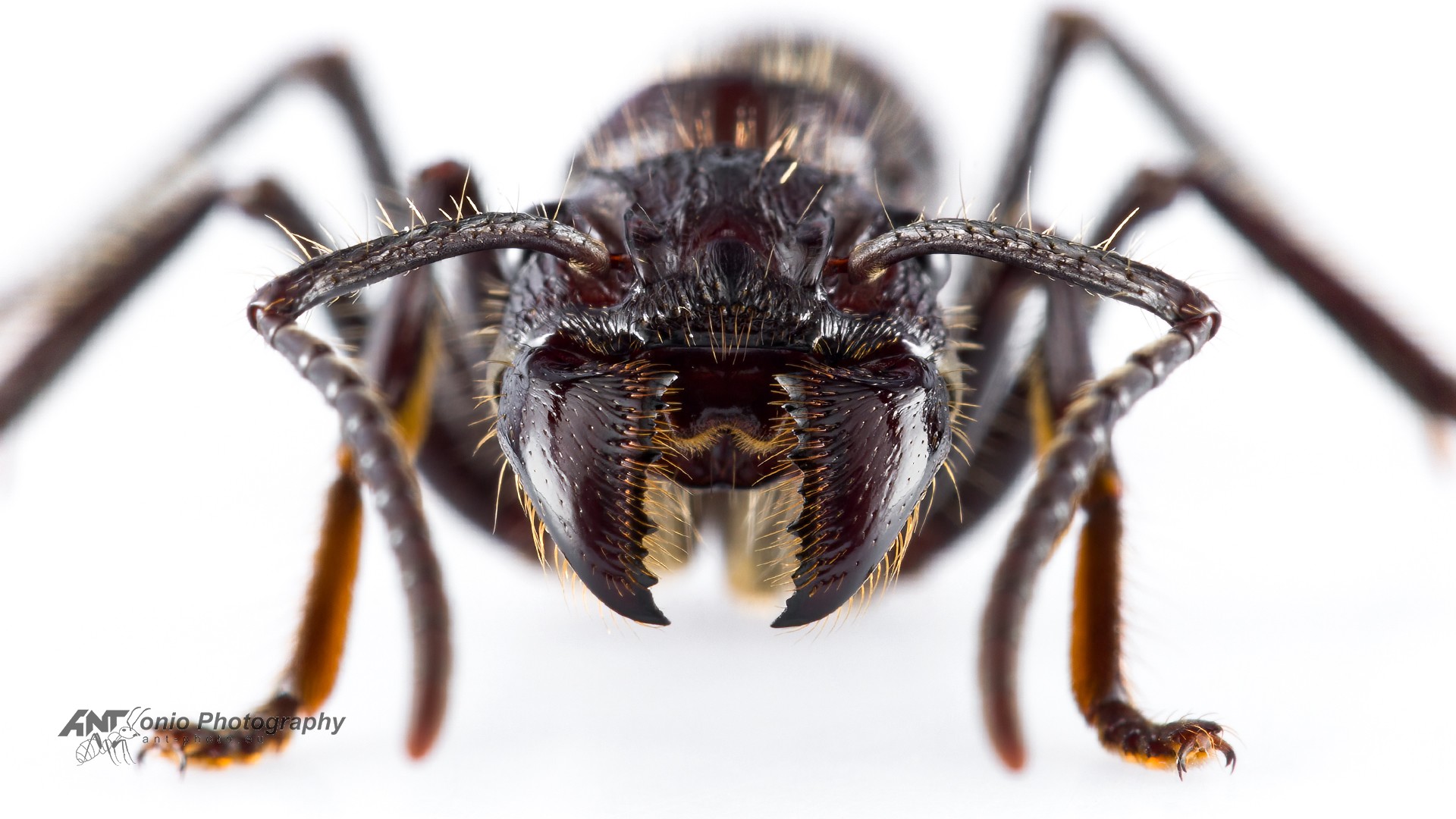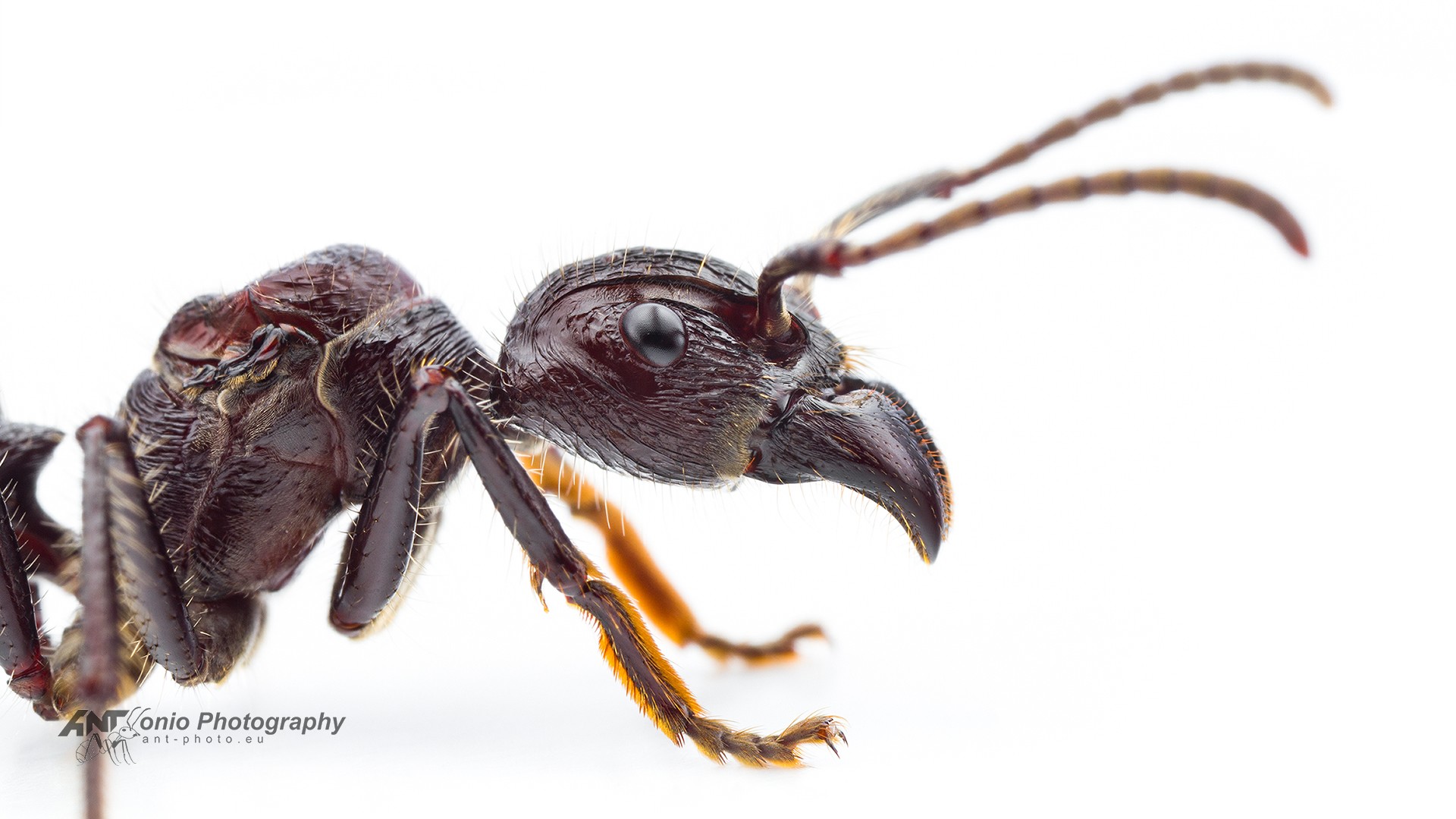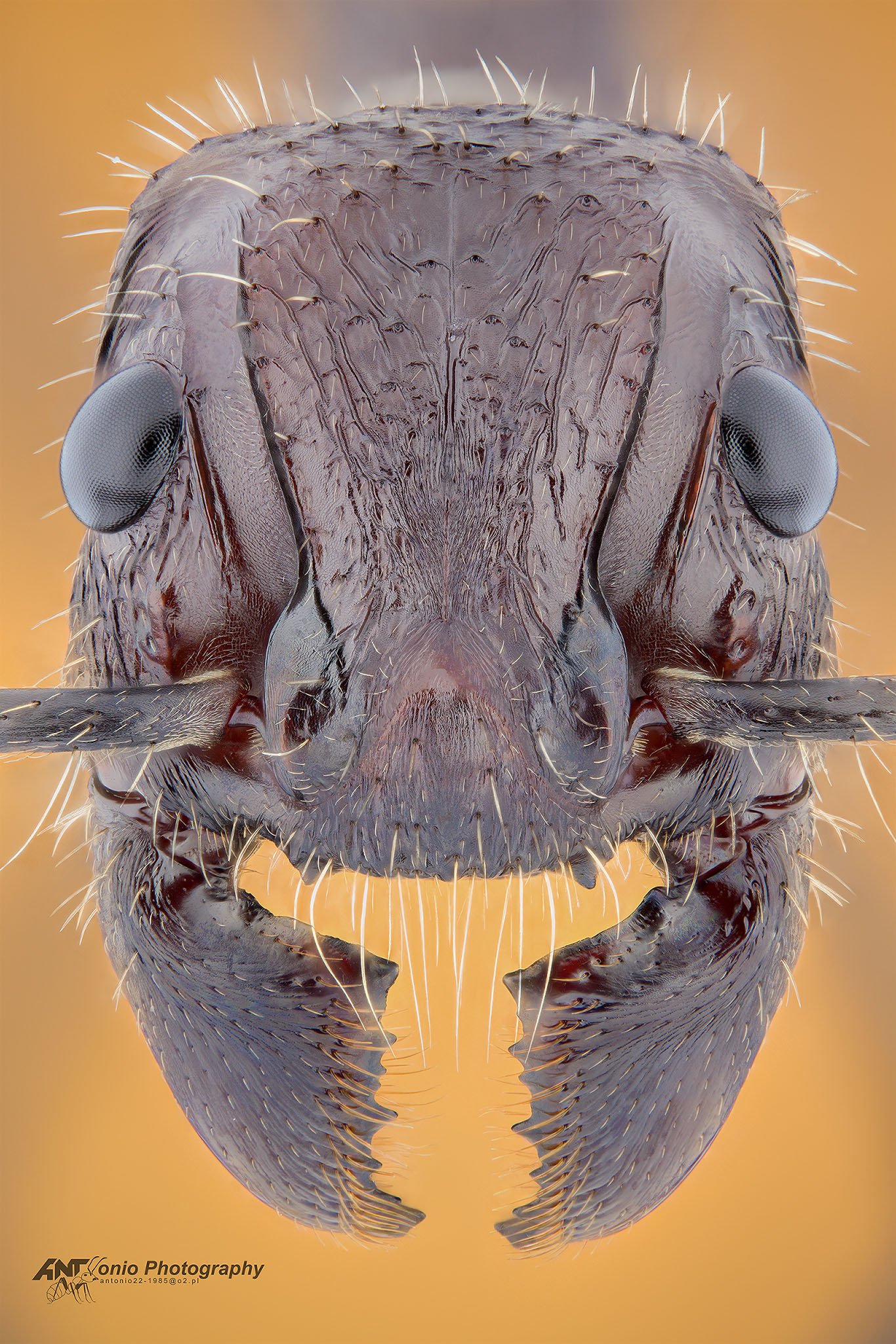Paraponera clavata
Bullet Ant
Mrówka pocisk, mrówka pociskowa
| Rodzina | Family: | Formicidae |
| Podrodzina | Subfamily: | Paraponerinae |
| Plemię | Tribe: | – |
| Rodzaj | Genus: | Paraponera |
| Gatunek | Species: | P. clavata |
Paraponera clavata photo gallery
Opis Paraponera clavata
![]() Paraponera clavata (Fabricius, 1775) jest bardzo dużym gatunkiem mrówki, który należy do podrodziny Paraponerinae. Występuje w: Hondurasie, Nikaragui, Kostaryce, Panamie, Kolumbii, Wenezueli, Gujanie, Surinamie, Peru, Ekwadorze, Brazylii, Boliwii, Paragwaju i we Francji (Gujana Francuska). Często nazywana jest jako 'mrówka pociskowa’ (bullet ant) co jest nawiązaniem do bólu po jej użądleniu.
Paraponera clavata (Fabricius, 1775) jest bardzo dużym gatunkiem mrówki, który należy do podrodziny Paraponerinae. Występuje w: Hondurasie, Nikaragui, Kostaryce, Panamie, Kolumbii, Wenezueli, Gujanie, Surinamie, Peru, Ekwadorze, Brazylii, Boliwii, Paragwaju i we Francji (Gujana Francuska). Często nazywana jest jako 'mrówka pociskowa’ (bullet ant) co jest nawiązaniem do bólu po jej użądleniu.
Robotnice P. clavata ważą nawet do 250mg (Fewell i in., 1996) i mierzą ponad 2cm, a królowe są niewiele większe. Dla porównania największa europejska mrówka, królowa Camponotus ligniperda (Latreille, 1802) waży ok. 180mg (Seifert, 2018) przy długości ciała 18mm.
P. clavata gniazdują zazwyczaj u podstawy drzew, ale czasem też w ich koronach. Kolonie mogą liczyć ponad 2000 robotnic. (Breed i Harrison 1989)
Mrówki te zbierają głównie nektar, którego krople przenoszą między żuwaczkami, ale też insekty, oraz części roślin. Żerują przeważnie w koronach drzew. (Young i Hermann, 1980) Nektar pozyskują zazwyczaj z nektarników pozakwiatowych (Young 1977). P. clavata nie ograniczają furażerowania wyłącznie do drzewa pod którym gniazdują, gdyż mogą oddalać się od gniazda na ponad 100 metrów (Fewell i in., 1996). Mimo, iż owady roślinożerne stanowią niewielki procent diety tych mrówek, potrafią one skutecznie bronić drzewo przed grzybiarkami. James K. Wetterer w 1994 roku doszedł do tego wniosku na podstawie obserwacji ataku na Atta cephalotes (Linnaeus, 1758).
Swoją popularność zawdzięczają sile jadu, który został uznany przez Schmidta za najbardziej bolesny spośród wszystkich jadów owadów żądlących. Porównał on użądlenie do chodzenia po rozżarzonym węglu z gwoźdźmi wbitymi w pięty. Trzeba jednak pamiętać, że każdy odbiera ból inaczej, tak więc dla różnych ludzi będzie on mniej lub bardziej znośny. Spośród środkowoeuropejskich mrówek prawdopodobnie najbardziej boleśnie, bo porównywalnie do szerszenia europejskiego, żądli Manica rubida (Latreille, 1802).
Amazońskie plemię Sateré-Mawé używa Paraponera clavata do rytuałów inicjacyjnych. Mrówki są wypędzane z mrowiska za pomocą dymu, a następnie moczone w ziołowym wywarze. Potem wplata się je w specjalne rękawice, tak aby żądła były wystawione do wewnątrz. Młodzi mężczyźni muszą włożyć takie rękawice na obie ręce, a potem wytrzymać tak minimum 10 minut bez okazywania emocji. Cały rytuał musi być powtórzony 20 razy. (Postma, 2009; Dossey, 2011)
Description of Paraponera clavata
![]() Paraponera clavata (Fabricius, 1775) is a very large species of ant that belongs to the subfamily Paraponerinae. It is found in: Honduras, Nicaragua, Costa Rica, Panama, Colombia, Venezuela, Guyana, Suriname, Peru, Ecuador, Brazil, Bolivia, Paraguay and France (French Guiana). It is often called the 'bullet ant’, a reference to the pain caused by its sting.
Paraponera clavata (Fabricius, 1775) is a very large species of ant that belongs to the subfamily Paraponerinae. It is found in: Honduras, Nicaragua, Costa Rica, Panama, Colombia, Venezuela, Guyana, Suriname, Peru, Ecuador, Brazil, Bolivia, Paraguay and France (French Guiana). It is often called the 'bullet ant’, a reference to the pain caused by its sting.
P. clavata workers weigh up to 250 mg (Fewell et al., 1996) and measure over 2 cm, and the queens are not much larger. For comparison, the largest European ant, the queen Camponotus ligniperda (Latreille, 1802), weighs approximately 180 mg (Seifert, 2018) with a body length of 18 mm.
P. clavata usually nest at the base of trees, but sometimes also in their crowns. Colonies can contain over 2,000 workers. (Breed and Harrison 1989)
These ants collect mainly nectar, the drops of which they transfer between their mandibles, but also insects and plant parts. They mainly feed in the treetops. (Young and Hermann, 1980) They usually obtain nectar from extrafloral nectaries (Young 1977). P. clavata do not limit their foraging to the tree under which they nest, as they can move more than 100 meters away from the nest (Fewell et al., 1996). Even though herbivorous insects constitute a small percentage of the diet of these ants, they can effectively defend the tree against fungus gnats. James K. Wetterer in 1994 came to this conclusion based on observations of an attack on Atta cephalotes (Linnaeus, 1758).
They owe their popularity to the strength of the venom, which was considered by Schmidt to be the most painful of all stinging insect venoms. He compared the sting to walking on hot coals with nails stuck in your heels. However, it must be remembered that everyone perceives pain differently, so it will be more or less bearable for different people. Among Central European ants, Manica rubida (Latreille, 1802) stings probably the most painfully, comparable to the European hornet.
The Amazonian Sateré-Mawé tribe uses Paraponera clavata for initiation rituals. Ants are driven out of the anthill with smoke and then soaked in a herbal decoction. Then they are woven into special gloves so that the stings are exposed inward. Young men must put such gloves on both hands and then hold them for at least 10 minutes without showing any emotions. The entire ritual must be repeated 20 times. (Postma, 2009; Dossey, 2011)
Bibliografia / References
- Breed MD, Harrison JM. 1989. Arboreal nesting in the giant tropical ant, Paraponera clavata (Hymenoptera: Formicidae). Journal of the Kansas Entomological Society 62:133-135-
- Dossey A.T. Chemical defenses of insects: a rich resource for chemical biology in the tropics. In: Vivanco J.M. ed. Chemical Biology of the Tropics: An Interdisciplinary Approach, New York, NY: Springer, 2011, 27–57. Crossref.
- Fewell, Jennifer & Harrison, Jon & Lighton, John & Breed, Michael. (1996). Foraging energetics of the ant, Paraponera clavata. Oecologia. 105. 419-427. 10.1007/BF00330003.
- Postma T.L. Neurotoxic animal poisons and venoms. In: Dobbs M.R. ed. Clinical Neurotoxicology: Syndromes, Substances, Environments, Philadelphia, PA: Saunders, 2009, 463–489. Crossref.
- Seifert, B. (2018). The ants of central and north Europe. Lutra Verlags-und Vertriebsgesellschaft.
- Wetterer, J. K. (1994). Attack by Paraponera clavata Prevents Herbivory by the Leaf-Cutting Ant, Atta cephalotes. Biotropica, 26(4), 462–465.
- Young, A. M., & Hermann, H. R. (1980). Notes on Foraging of the Giant Tropical Ant Paraponera clavata (Hymenoptera: Formicidae: Ponerinae). Journal of the Kansas Entomological Society, 53(1), 35–55.

